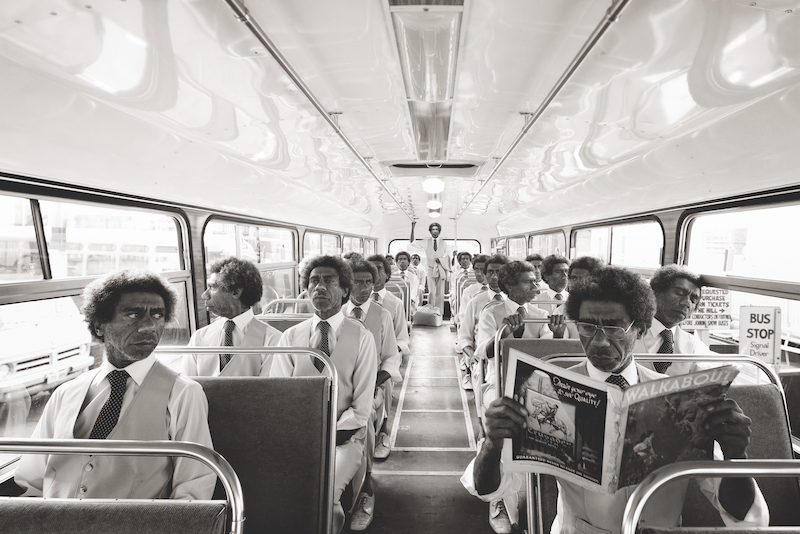In the works: Art History 101
Visual arts 101: lessons in influential artworks and their significance.
Words: Rex Butler
EVERYONE KNOWS the story of Jonathan Swift’s 1726 literary classic Gulliver’s Travels. In part one, Lemuel Gulliver goes to the land of the Lilliputians, where he is a giant. In part two, he travels to the land of the Brobdingnags, where he is a midget. And in part four, he visits the land of the Houyhnhnms, where talking horses rule the world and humans – Yahoos – are regarded as lesser beings. Swift’s book is one of the great satires, where the usual norms by which we live are upended and we are forced to look at the world in a different way.
Brisbane-based photographer of Bidjara descent Michael Cook’s 2014 series Majority Rule is exactly a satire in this Swiftian sense. He begins from the premise that, if today in contemporary Australia 4 per cent of the population is Indigenous and 96 per cent not, he will invert this so that 96 per cent of the population is Indigenous and 4 per cent not. The result is a series of striking depictions of a stream of besuited black men walking through a train tunnel, a Senate full of debating black politicians, and teams of black lawyers putting their various cases to the High Court, whose judges we can only imagine are nearly all black. In Bus, we have a long, artificially extended bus taking some 21 (by my count) identically dressed men to work. One of them is even reading the well-known Australian magazine Walkabout, in which white Australia tried to affect some kind of (patronising) reconciliation with its First Nations peoples.
The great predecessor for Cook’s project – and, of course, his very name embodies the inversions and oxymorons of his work – is the 1986 short Babakiueria, which purports to depict a hypothetical black Australia. In the opening scene of the film, we are shown a group of Indigenous colonisers arriving by boat to a country full of lazy, typically “Aussie” natives playing cricket and drinking beer. And soon after taking over the place, we can hear Aboriginal spokes- people bemoaning the character defects of its previous inhabitants, who don’t know how to care for themselves and will now have to be looked after by them.
In the 2018 National Gallery of Victoria exhibition Colony: Frontier Wars, Cook’s work was shown with Brook Andrew’s Gun-Metal Grey (2007), in which archival images of now unknown Aboriginal people were printed over metallic foil so that they became invisible, depending on where one stood in relation to them. For all of the simulacral solidity of Cook’s photographs, there is a similarly fugitive quality to them also. They briefly open up another reality, another truth, another justice, that just as quickly closes as we return to our everyday lives in which we will rarely – if ever – see an Aboriginal man on a bus in the morning, wearing a suit (even a white one) and going to work.
This article was originally published in Art Collector issue 88, APR – JUN 2019.
Image: Michael Cook, Majority Rule (Bus), 2014. Inkjet print on paper, 98 x 140cm or 140 x 200cm. Courtesy: the artist and Andrew Baker Art Dealer, Brisbane.







